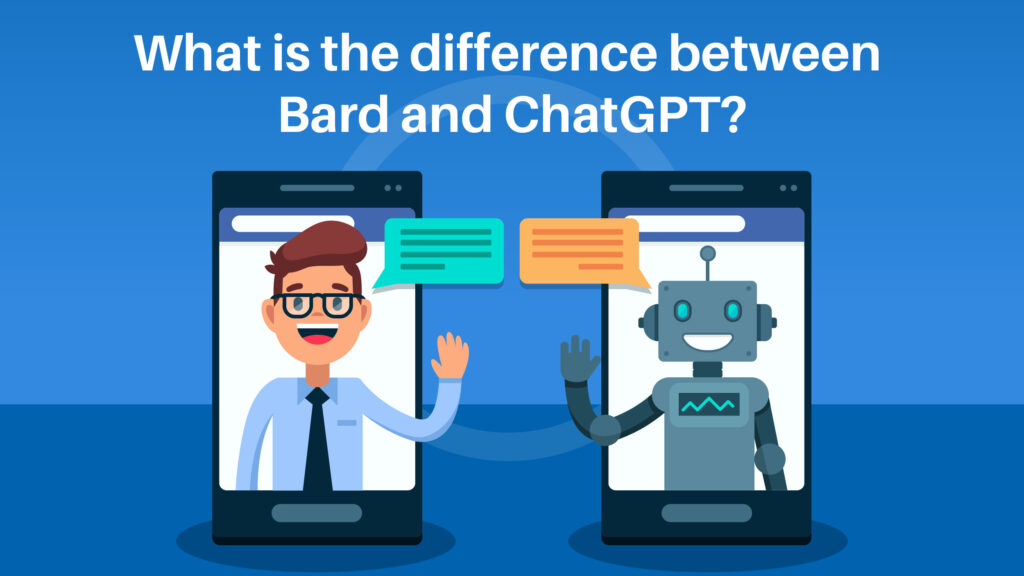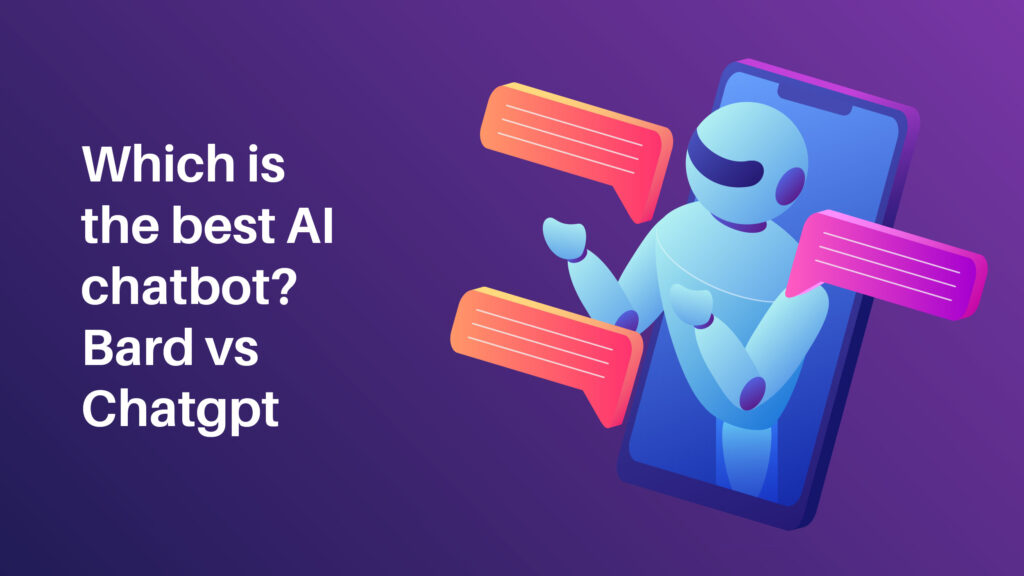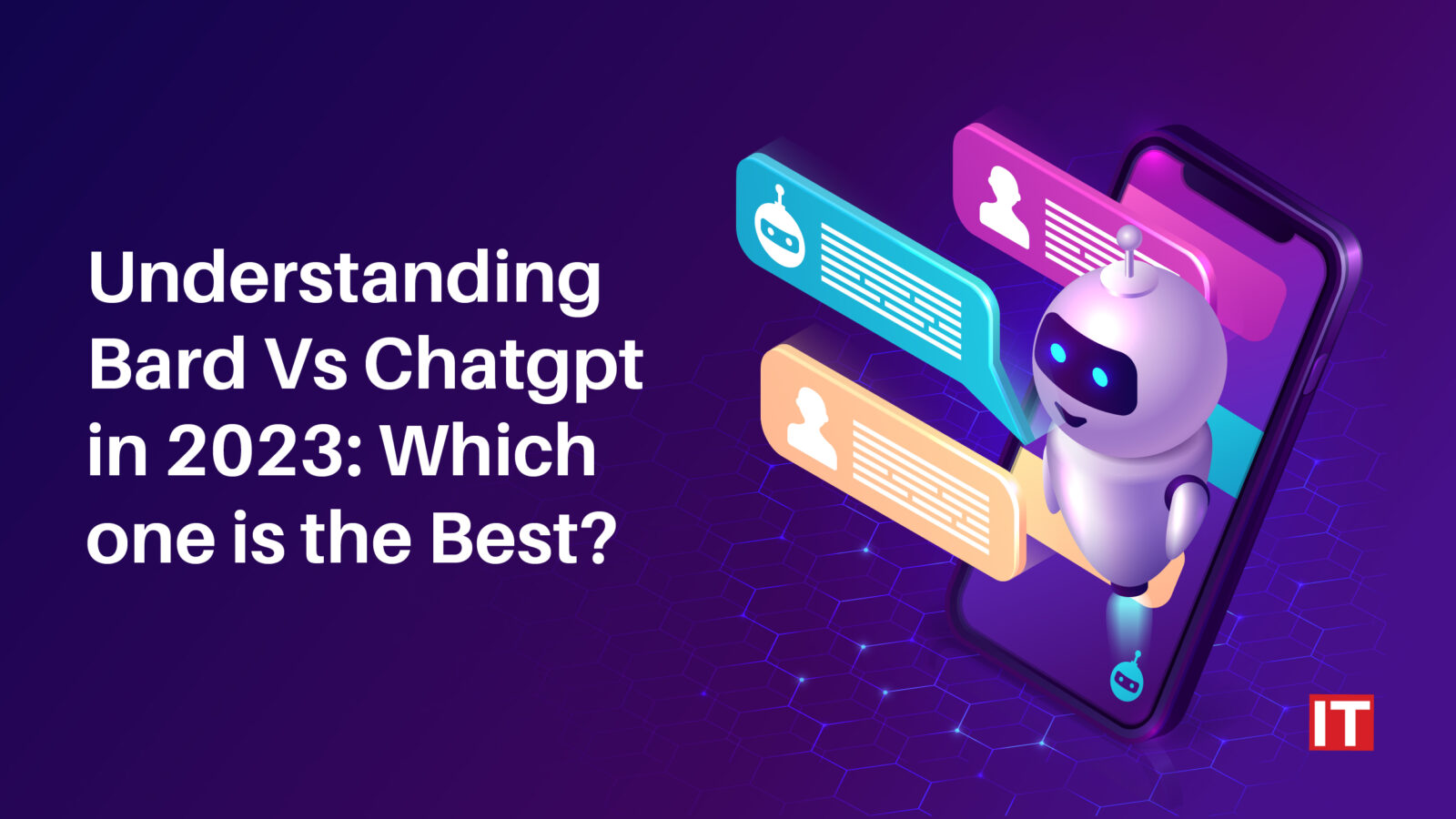If there is one word everyone in the world keeps chanting over and over again, it is chatgpt and bard. Artificial intelligence has always been a topic of entertainment and excitement recently. With the arrival of advanced chatbots like Chatgpt, this obsession with AI has reached an entirely new level.
Every day on social media, at least one mention of bard vs chatgpt does the rounds. Up until June 2023, there are over 100 million chatgpt users and chances are you are one of them. The whole world went gaga when OpenAI released a free version of Chatgpt in December 2022 and when Google released Bard as a competitor.
Everyone wanted to try their hands on the new AI and the count keeps increasing even now. This calls for multiple questions arising in our head (in mine too) regarding what is the difference between Bard and ChatGPT, which is the best AI chatbot, and so on.
Let’s dive in and find answers to your questions.
What is ChatGPT?
An AI-powered chatbot called ChatGPT employs machine learning to respond to questions in a natural conversation. On November 30, 2022, OpenAI made ChatGPT available. According to Sam Altman, CEO of OpenAI, ChatGPT reached a million users in just five days.
The term “GPT” refers to a pattern-finding algorithm that analyzes data sequences. Currently, ChatGPT employs the GPT-3.5 language model, which was trained using text that was written by humans and posted online. The improved GPT-4 model is currently used by the premium version, ChatGPT Plus. The AI language model is used by ChatGPT to create responses to user inquiries.
What is Bard?
Google Bard, is another AI-driven chatbot which uses responses from the internet to replicate human interactions using natural language processing and machine learning. Bard updated to Google’s PaLM 2 (Pathways Language Model), a next-generation language model, from LaMDA for dialogue applications.
According to a blog post by Google, this model is superior to prior models in terms of logic, mathematics, and common sense thinking. The manufacturer added that the new device is quicker than earlier iterations. Through this extensive language model, Bard answers queries in greater detail than the ordinary Google search.
Similar to digital assistants like Alexa and Siri, Bard’s major objective is to obtain information in a straightforward response rather than a search engine results page, but with links for consumers to find out more. Bard also works as a personal assistant, helping with things like making reservations, booking vacations, and meal preparation. In contrast to search engine terms, Bard employs more natural language or conversational search queries. In 180 countries, Bard is open to the public and provides content in three different languages.
What is the difference between Bard and ChatGPT?
 The Large Language Models (LLMs) that ChatGPT and Bard are powered on are the main distinction between them. Bard employs the Language Model for Dialogue Applications (LaMBDA), while ChatGPT uses the Generative Pre-trained Transformer 4 (GPT-4). Additionally, Bard was created by Google, whilst OpenAI produced ChatGPT.
The Large Language Models (LLMs) that ChatGPT and Bard are powered on are the main distinction between them. Bard employs the Language Model for Dialogue Applications (LaMBDA), while ChatGPT uses the Generative Pre-trained Transformer 4 (GPT-4). Additionally, Bard was created by Google, whilst OpenAI produced ChatGPT.
Both have similar capabilities and do the same tasks. ChatGPT can be used by programmers for:
Both models are capable of recommending the proper parameters and syntax for functions and other code constructions.
- It can finish writing code that you’ve already started.
- Debugging: It can assist you in locating bugs and issues in your code.
- It can explain the code you input as well as the code it generates.
Both bard vs chatgpt models were trained on an extensive set of data that included content that was collected from the internet, Common Crawl, Wikipedia, books, articles, and documents. In contrast to ChatGPT, which was mostly trained on broad content that was scraped, Bard was educated on web-based interactions and dialogues.
Both programs are currently being worked on, however Bard is a little more along than ChatGPT.
Which is the best AI chatbot? Bard vs Chatgpt
 When there are two powerful chatbots, naturally everyone would want to know which among them is the best AI chatbot. To answer this question, it is crucial to conduct a detailed analysis on bard vs chatgpt. And this is exactly what we have done so you don’t have to, let’s get doing.
When there are two powerful chatbots, naturally everyone would want to know which among them is the best AI chatbot. To answer this question, it is crucial to conduct a detailed analysis on bard vs chatgpt. And this is exactly what we have done so you don’t have to, let’s get doing.
Checking user experience, Bard wins the race
In terms of its user-friendly UI, Bard is miles ahead of ChatGPT. You can edit your questions after you ask them and read several responses that it articulates, in addition to the fact that it looks nicer and has formatted text when compared to ChatGPT’s chunky text.
Each answer also includes a call to action (CTA) that directs you to Google it to verify its origins. Additionally, it is linked to your Google Workspace, making it simple for you to upload Bard’s responses to Google Docs or your Gmail.
The fact that in the case of bard vs chatgpt, the former doesn’t truly store or maintain track of your previous talks is the greatest drawback to its usability.
In contrast, ChatGPT allows you to view all of the questions you’ve ever asked in the side panel. It becomes much more collaborative if you share such chats with friends and coworkers.
When the person you sent the link to opens it, your conversation will be imported into their ChatGPT interface, making it simple for them to see your amusing exchanges, thorough prompts, or whatever else you’re sharing—and it’ll let them pick up where you left off with the memories the conversation stored.
In this scenario, the fight between bard vs chatgpt, the latter wins.
Bard is the nerd, whereas ChatGPT is the writer
First things first: there will be logical problems with both Bard and ChatGPT. For instance, when I asked them both the identical straightforward logic question, they both answered incorrectly.
Although GPT-4 (with ChatGPT Plus) got it correct, it still gets a lot of other stuff wrong. Conclusion: It’s challenging to compare the outputs’ correctness, especially given that much of it depends on how you word the question.
Bard’s work is actually quite beneficial if you’re looking for short answers to any topic, reasoning abilities aside. This is because Bard compiles the most pertinent information from Google for you. The advantage of this situation is that Bard will handle all of your information comparison and page-clicking for you.
The outcome of bard vs chatgpt? Bard’s one noisy assistant is enthusiastic about acquiring information for you to make your life easier while acknowledging sources along the way.
GPT, on the other hand, powers other AI tools like Jasper, Copy.ai, and Bing’s AI tools and is the industry standard for natural language jobs. It is well-versed in writing for the web and is more interested in producing text based on statistical trends. It has a chatbot feature as part of ChatGPT, but it can also play other text-based roles as summarizer and translator.
Bard uses Google Search while ChatGPT’s web browser uses Bing as its search engine.
It goes without saying that if Bard couldn’t access the internet, it would be a rather poor research tool. In contrast to ChatGPT’s free edition, which is essentially a massive encyclopedia and expires in 2021, Bard will inevitably search Google for any information that is not included in its training data set, winning the bard vs chatgpt race.
This is especially important in relation to:
- investigating current happenings
- highlighting important information in web pages
- displaying pictures for context
Bard vs ChatGPT: Which is better?
That was a lot to process, so let’s quickly go over the advantages and disadvantages.
There are numerous salient benefits and drawbacks to take into account while contrasting bard vs chatgpt:
Bard:
Pros:
-Google Search-powered internet access is available at Bard, providing instant answers and access to a plethora of knowledge.
-It is excellent at surfacing pertinent data from Google Search, including photos.
-Bard offers a simple user interface with well structured responses that simulate human interaction.
Cons:
Since Bard is prone to hallucinations, its responses should be taken with a grain of salt and should be independently checked.
- There may be times when the sources offered by Bard are not trustworthy, making fact-checking necessary.
- Bard has a good user experience, but the lack of plugins or integrations restricts its usability for complex tasks.
ChatGPT:
Pros:
- ChatGPT is a flexible language model that may be used for a variety of informational and conversational purposes.
- It provides a broad knowledge base and factual correctness, ensuring trustworthy and knowledgeable responses.
- ChatGPT is capable of navigating a variety of conversational scenarios and offering information on any given subject.
Cons:
ChatGPT may not possess the same level of specialist knowledge in poetry and creative writing as Bard.
- It may fall short of Bard’s poetic language’s originality and flair.
- Sometimes, ChatGPT’s comments might not be entirely coherent or relevant.
Bard vs chatgpt: Who is the Winner?
Bard provides quick answers due to its built-in Google Search, but rigorous verification is necessary due to its risk of hallucinations and shaky sources. It has a user-friendly interface and excels at surfacing pertinent information.
Conversely, while ChatGPT is a flexible language model capable of handling many jobs, it can fall short of Bard’s specific knowledge and lyrical flair. Although it has a wider range of knowledge and factual correctness, it occasionally has small coherence problems.
In terms of reliable, current information, Google Bard is the undisputed champion. However, ChatGPT is more effective for activities requiring productivity and creativity.
The decision between bard vs chatgpt, ultimately comes down to individual needs and requirements.


































